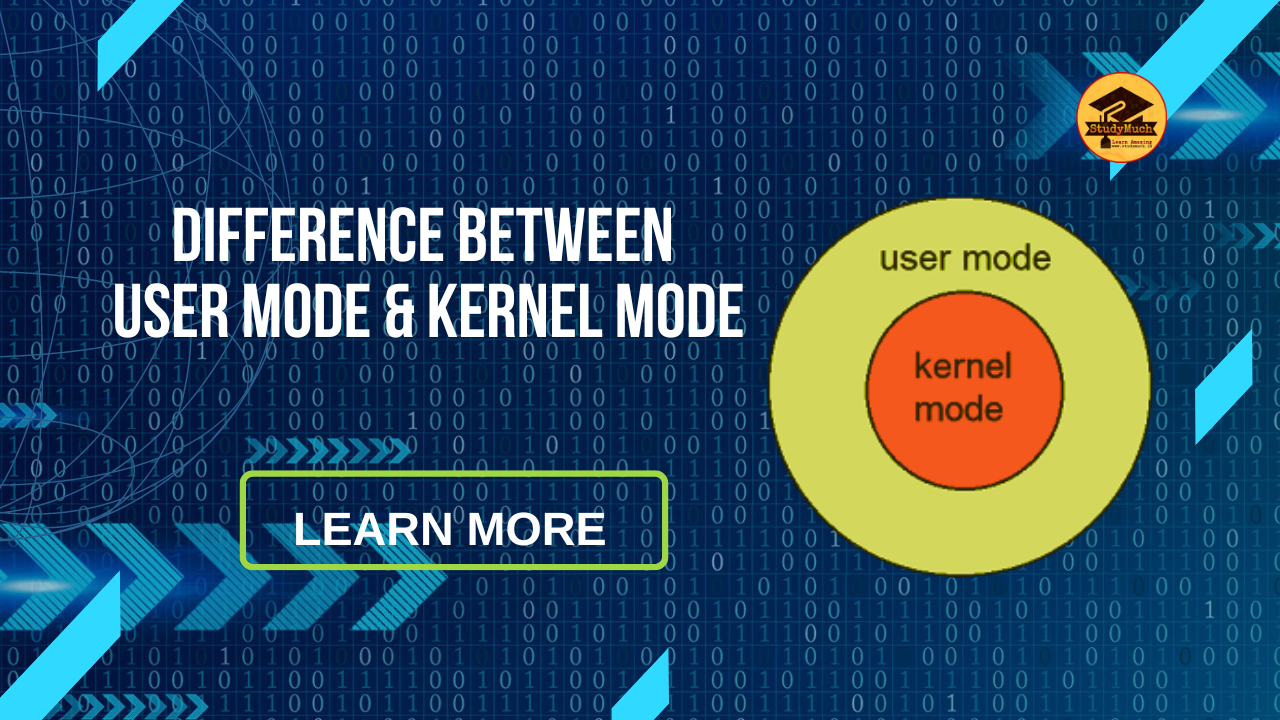Difference between User Mode and Kernel Mode

Difference between User Mode and Kernel Mode in Operating Systems
When it comes to operating systems, two fundamental modes govern their functionality and interactions with hardware and software: User Mode and Kernel Mode. These modes play a crucial role in ensuring the stability, security, and efficiency of an operating system. In this blog post, we will explore the key differences between both Modes, their respective roles, and how they work together to create a smooth computing experience for users.
Definition and Purpose:
User Mode:
User Mode, also known as User Space or User-level Mode, is a restricted execution mode in which user applications and processes run. When you launch programs like web browsers, word processors, or games, they operate primarily within the User Mode. This mode provides an isolated environment for applications, allowing them to access only their designated memory areas and limited hardware resources.
Kernel Mode:
Kernel Mode, also referred to as Supervisor Mode or System Mode, is a privileged execution mode that has direct access to the system’s hardware and resources. The kernel is the core component of an operating system, responsible for managing tasks such as memory management, process scheduling, and hardware interaction. It runs at the highest privilege level and can execute sensitive system instructions, making it crucial for the OS’s stability and security.

Difference between User Mode and Kernel Mode;
Below is the difference between Kernel Mode and User Mode presented in a table.
| Kernel Mode |
User Mode |
| In kernel mode, the program has direct and unrestricted access to system resources. | In user mode, the application program does not have direct access to system resources. In order to access the resources, a system call must be made. |
| In Kernel mode, the whole operating system might go down if an interrupt occurs | In user mode, a single process fails if an interrupt occurs. |
| Kernel mode is also known as the master mode, privileged mode, or system mode. | User mode is also known as the unprivileged mode, restricted mode, or slave mode. |
| In kernel mode, all processes share a single virtual address space. | In user mode, all processes get separate virtual address space. |
| In kernel mode, the applications have more privileges as compared to user mode. | While in user mode the applications have fewer privileges. |
| As kernel mode can access both the user programs as well as the kernel programs there are no restrictions. | While user mode needs to access kernel programs as it cannot directly access them. |
| The mode bit of kernel-mode is 0. | While; the mode bit of user-mode is 1. |
| It is capable of referencing both memory areas. | It can only make references to memory allocated for user mode. |
| A system crash in kernel mode is severe and makes things more complicated. |
In user mode, a system crash can be recovered by simply resuming the session. |
| Only essential functionality is permitted to operate in this mode. | User programs can access and execute in this mode for a given system. |
| Requires robust design and testing. | Provides an extra layer of security. |
Understanding the differences between both modes is essential for grasping the architecture and functioning of modern operating systems. Their distinct roles and responsibilities enable a balanced and secure computing environment.
Conclusion:
In summary, the distinction between both modes is essential for understanding the inner workings of operating systems. User Mode serves as a protective boundary for user applications, while Kernel Mode manages the core operations of the OS and grants privileged access to system resources. Their harmonious cooperation ensures a secure, stable, an efficient computing experience for users while safeguarding the overall integrity of the system.
Learn More;


0 Comments